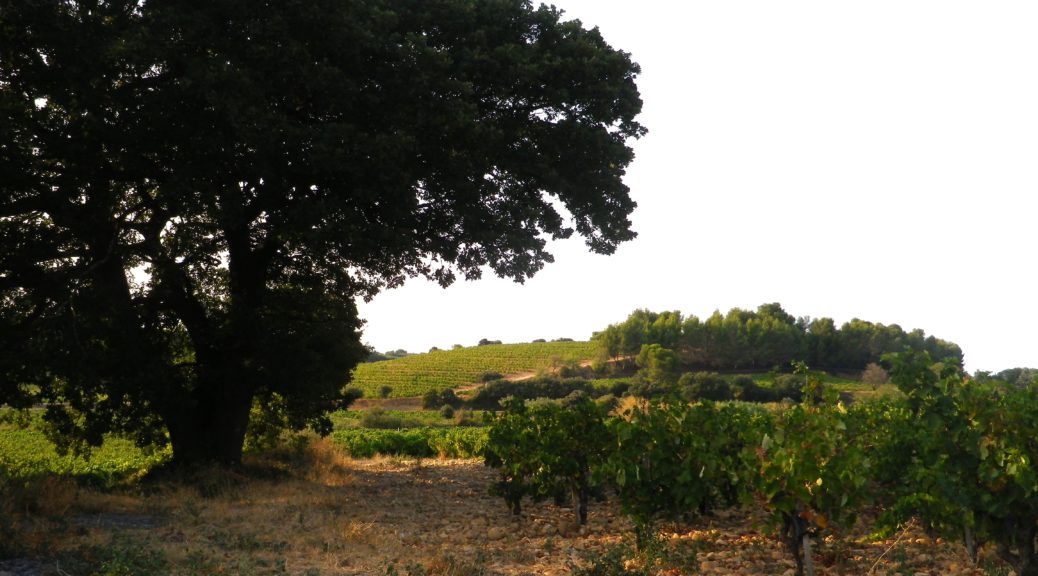In the early 14th century, a Pope decided to make a new residence (his Chateauneuf, or New Castle) in the countryside a few miles north of Avignon. The intent was to use this as a summer residence, away from the noise and heat of Avignon. Vines have been in this area, around what is now the village of Chateauneuf du Pape, for at least a couple of millennia. The wine it produced, though, was not particularly good. But with papal money and interest, the wine improved greatly over time. Nowadays, Chateauneuf du Pape wine is one of the most iconic wines of the world.
So, with great enthusiasm, I headed to the village to hike an easy trail through its vineyards, try its wines, and see its “New Castle”.
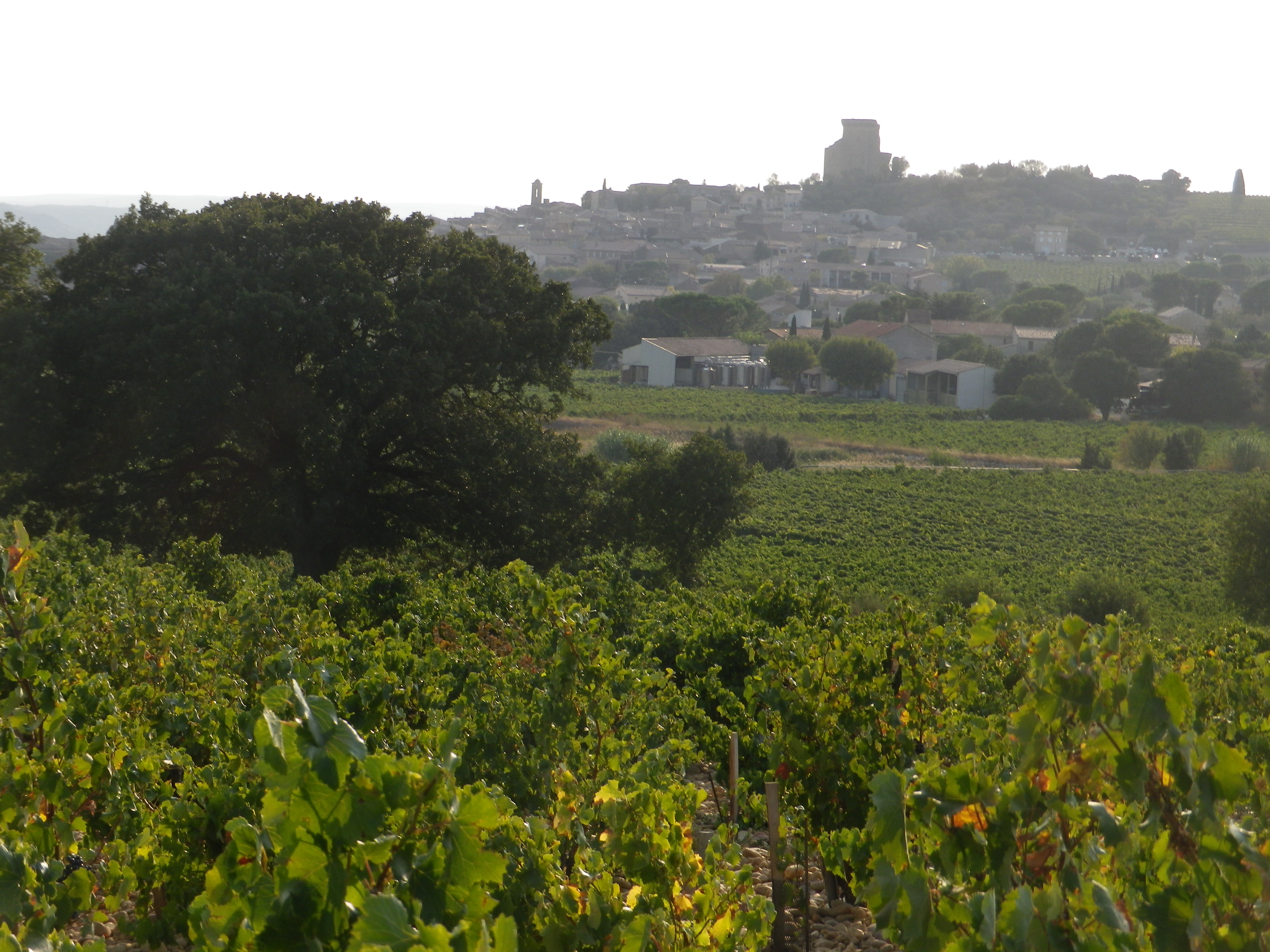
To be honest – the vineyards make the trip worthwhile here. They surround the village completely. This trail passed through the vineyards to the east of the village. My first surprise was seeing the galets. I had heard of them, of course. These stones both help keep weeds down, and help retain the sun’s heat (from day into night). But seeing them on the ground, and appreciating their size and texture, was another thing altogether. In one place, they were several deep on the ground, looking like so many harvested Russet potatoes, still lying in the field. (Caution: It makes for slow(er) walking.) Later, I came to a cut in a bank, and the layers were visible in the soil for at least a couple of feet!
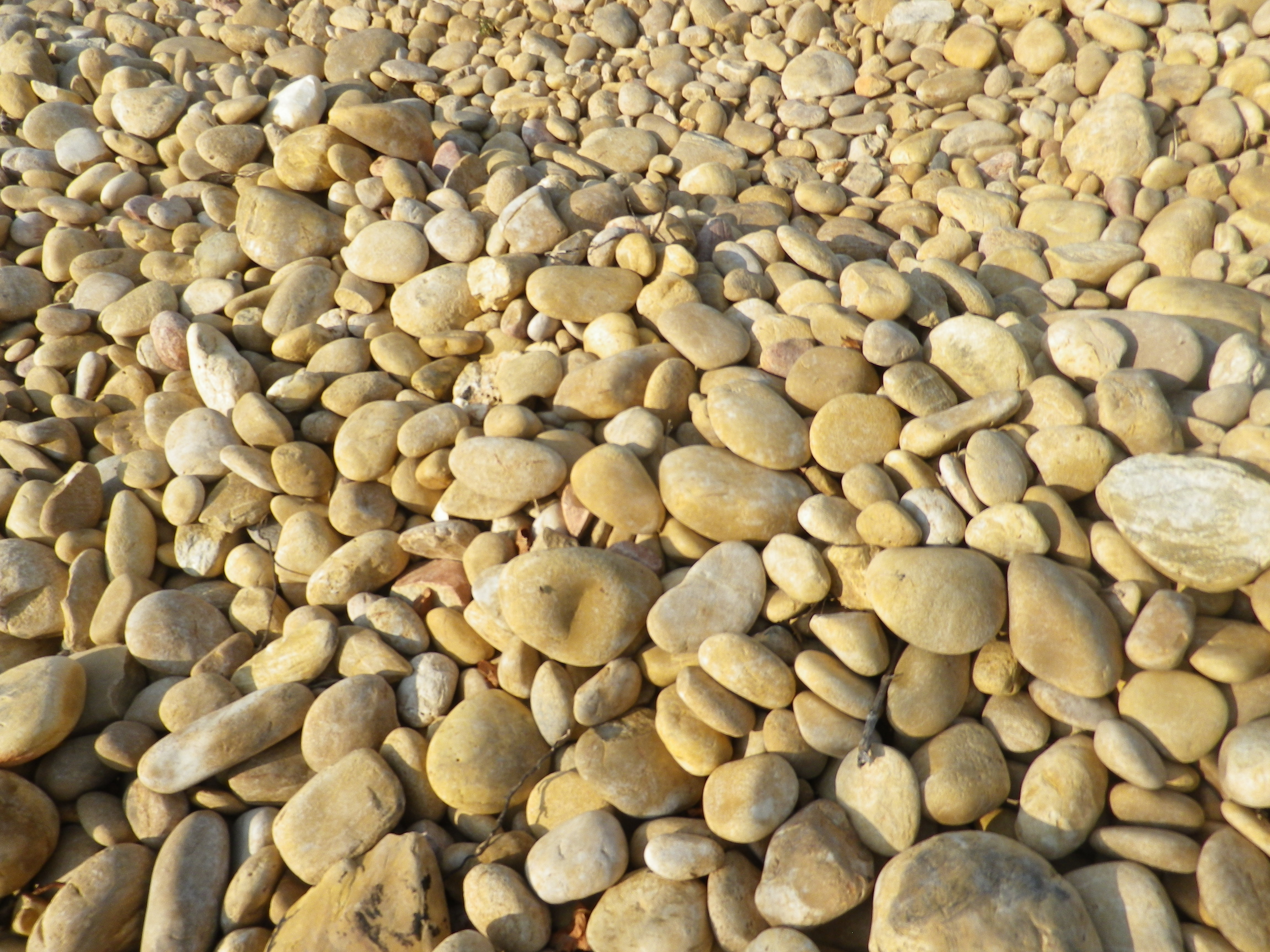
Another thing to notice along this trail, is the number of different vine pruning/training techniques. Usually you will see one, maybe two, types of pruning. But here, they even had the Gobelet (vines shaped like a goblet), in addition to the Guyot and the Cordon de Royat. This and other interesting tidbits of information about the terroir and the viticultural practices here may be found on education boards all along the trail. (While the trail’s boards are only in French, a brochure from the tourism office (https://en.chateauneuf.com/le-sentier-viticole) provides explanations for each board in French and English.)
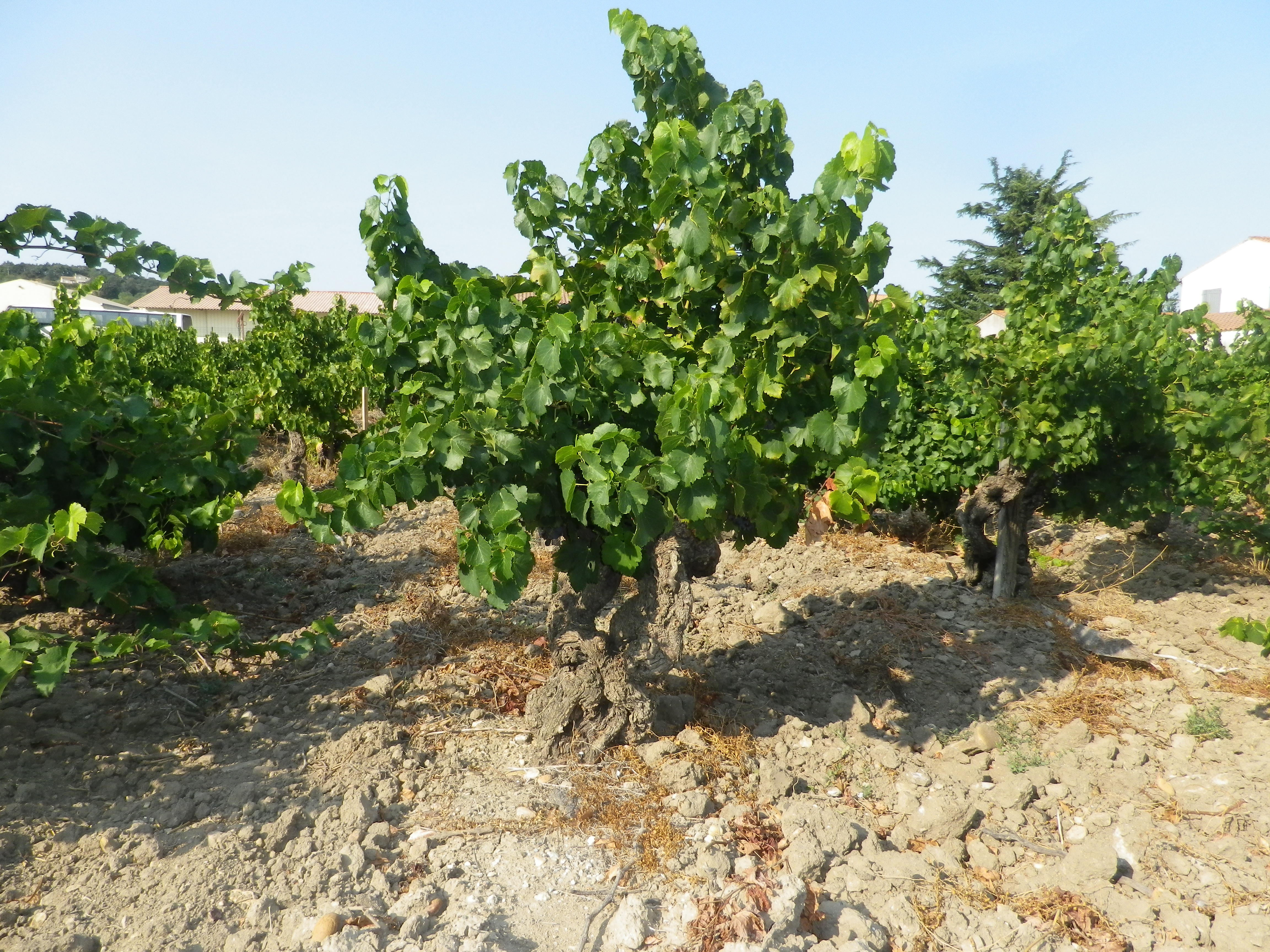
Finally, I noticed that this was an undulating land – more than I had expected or realized at first. With each rise and fall of a slope, around each turn of a vineyard or hedge row, I had a different long distance view. Sometimes Chateauneuf du Pape would disappear from view completely. Other times, I found myself facing the white slopes of Mount Ventoux. Cresting another slope, my old haunts the Alpilles, by Vacqueyras and Gigondas, magically appeared. Yet, I never saw the Rhone River, although the village lies not too far from it.
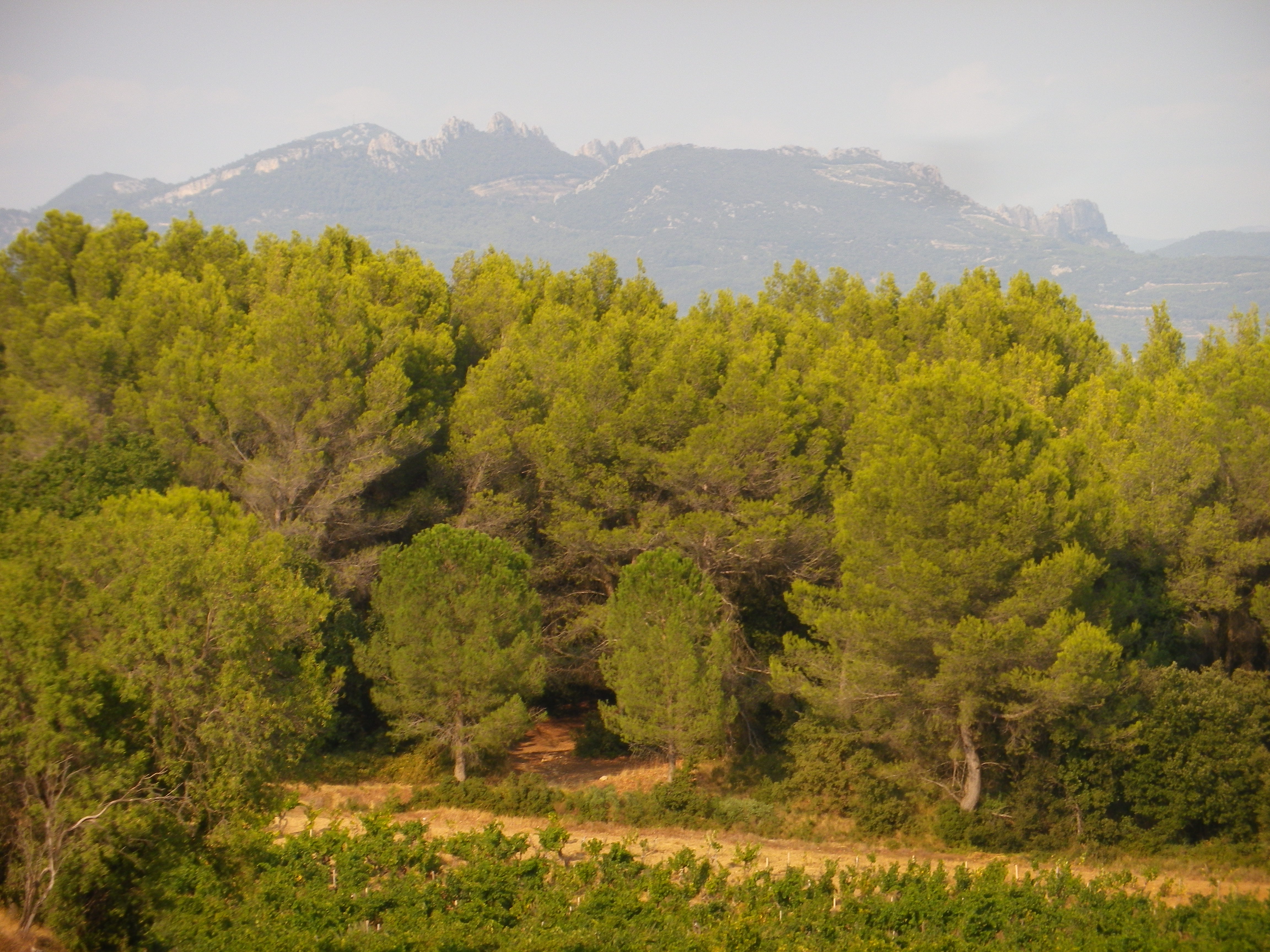
After I passed through the section of vineyards known as the Crau (which means stone in Provencal – per the board), I followed the trail through a wooded section. It provides the only shade for hikers on this itinerary, and is welcome, as it immediately precedes the final section of the trail, a walk along the road back to the starting point on the outskirts of the village
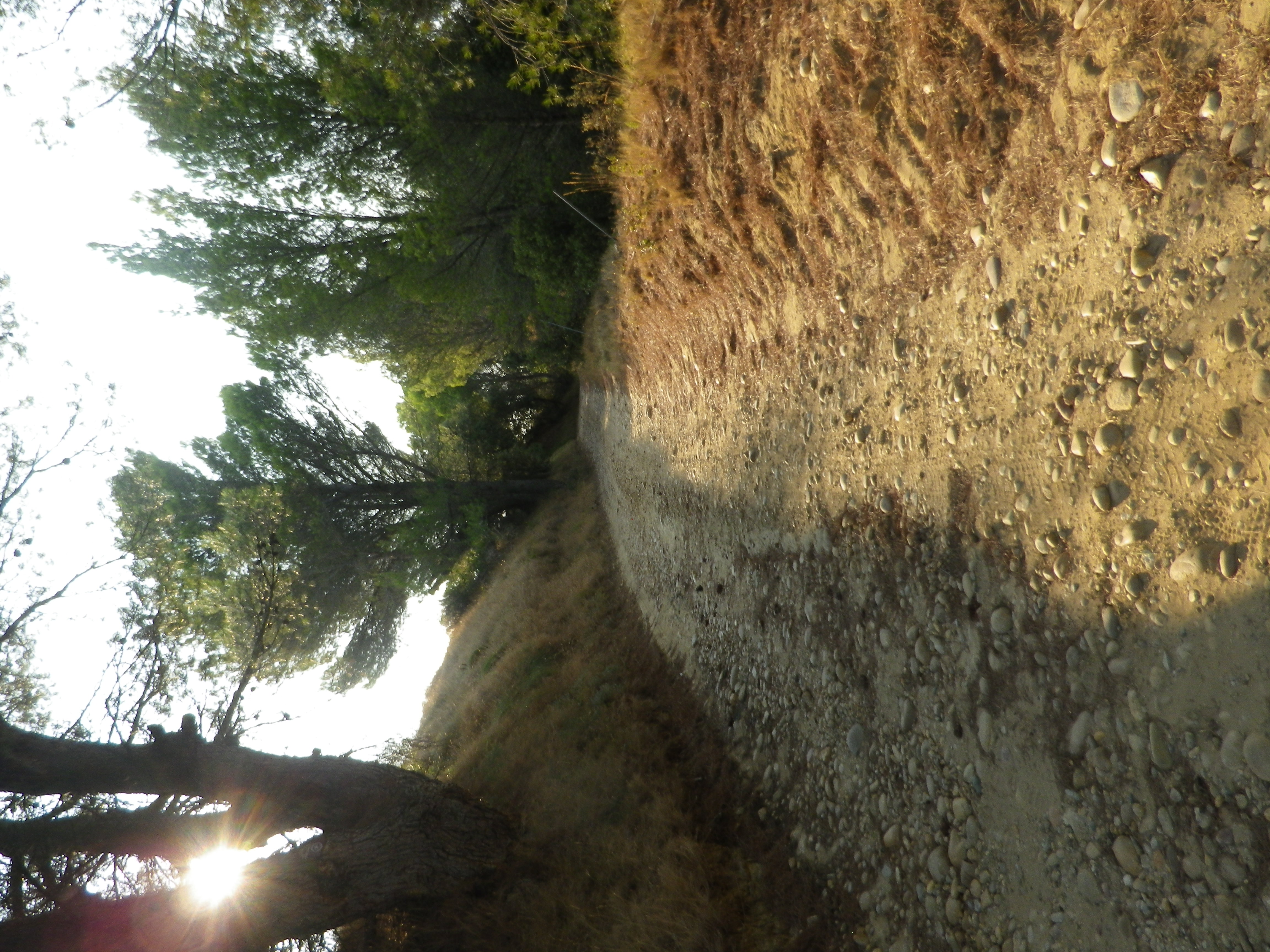
To return to the car, I had to walk back through the village. For such a famous wine, the village was fairly small, (and the tourism infrastructure even smaller). Its castle is a mere ruin, albeit a highly photographed one. Nonetheless, it was exciting to visit the place that may be called the birthplace of the Appellation d’Origine Controlee system, and home to former Popes and famous vineyards. Then, of course, there is the wine – in so many wineries, so many shops – to explore!
